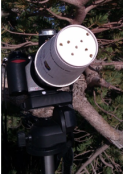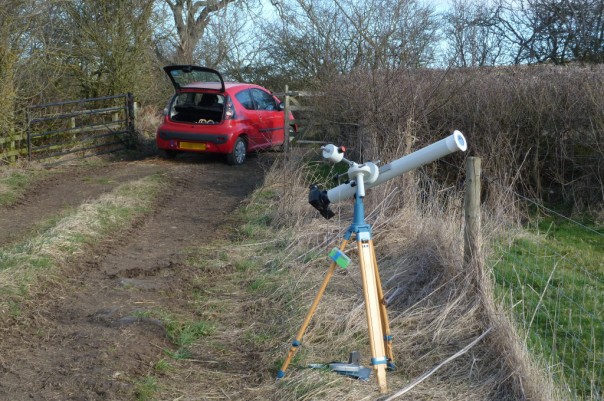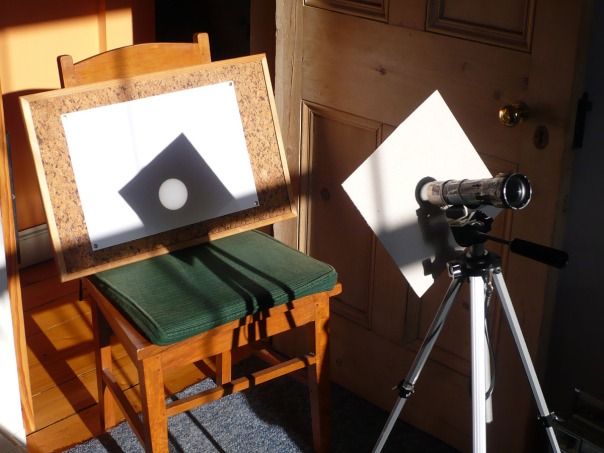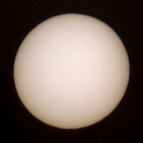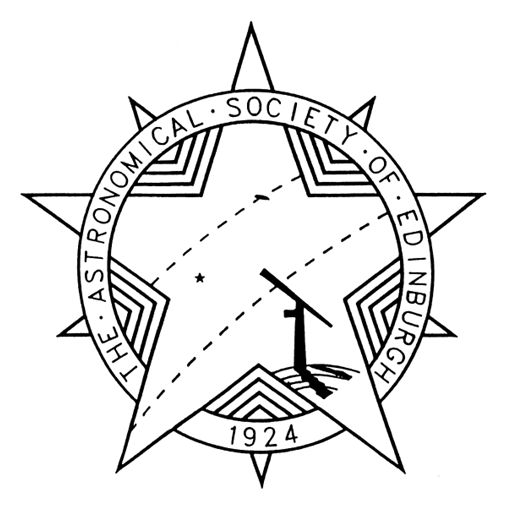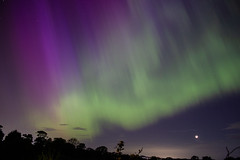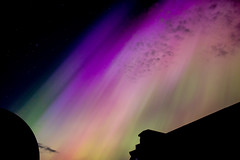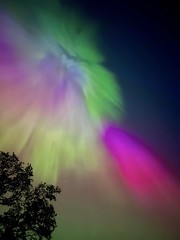Blog Archives
Solar Eclipse 2015 – Members’ Experiences

Members of the Astronomical Society of Edinburgh setting up telescopes and helping members of the public to view the eclipse. (Photo: Andrew Cowan/Scottish Parliament)
My eclipse experience was rather different to the event I was expecting. When Seán first proposed the idea of hosting an event outside the Parliament, I thought it was a great idea. Something new, a nice setting, plenty of hard standing for telescopes, and maybe a little bit of publicity for the Society and astronomy in Edinburgh. After various meetings with the Parliament, the Society’s council and many, many emails back and forth covering all manner of topics (including verification that Arthur’s Seat wouldn’t be in the way!), I was getting decidedly worried that the weather would ruin the big event which was unfolding.
When the sun was shining on the morning of the eclipse, I was dutifully sceptical – well how many astronomers in Scotland don’t assume the worst? But as the sun was still shining when we reached the Parliament, a little bit of hope took hold and steadily began to grow. Maybe, just maybe, the weather would be kind to us for once.
Even as we were setting up at 7.30am, there were a small number of people gathered outside the Parliament – whether because they knew we would be there, or because they had just thought it would be a good place to observe the eclipse I don’t know, but it is nice to think it was because of the ASE! I ended up inside to help set up for the school groups which would be coming in for a short talk on eclipses, and then to observe the event either on television screens broadcasting pictures from the Faroes, or with solar viewers for the older children. Ken and Seán had kindly agreed to talk to a group each of older and younger children and we had various hand-outs set out for anyone who wanted more information.
Seán had a solar viewer tucked away in his pocket, and while we were getting organised we managed to sneak our first glimpse of the eclipse through the window of a conference room. I knew what to expect – I had witnessed eclipses before, albeit none which reached the percentage of totality that this one did – and this small bite of darkness out of the sun’s disk shouldn’t have been a shock to me. But I found myself feeling utterly incredulous and completely gleeful all at the same time – our moon is actually blocking the sun from view. This should be impossible, but due to all manner of little coincidences, the conditions on Earth are such that we can see eclipses happening every so often, and it truly is an epic natural phenomenon.
Just as the talks were getting underway, a member of the Parliament staff came looking for Seán, now occupied by 40 school children, for help with the crowds outside. When it became clear that some queue management was needed – someone who could figure out which of the scopes was ready for the next person to come and have a look, and point them in the right direction – I have to admit to being a little bemused. We had somewhere in the region of 6 scopes set up and various people with eclipse glasses, projection set-ups, binoculars and colanders as well – there should be plenty instruments there to deal with the small groups of people who would like a look at the eclipse!
Being the only person available for the job, I went outside with the concerned member of staff, and was greeted by a sight I never could have anticipated. The queue for the telescopes meandered away from the scopes and off around the building. I have no idea how many people were in the queue but it must have been easily in excess of two hundred people, and there were many, many more people standing around the site watching the eclipse through their own solar viewers, taking photos or using pin-hole projection.
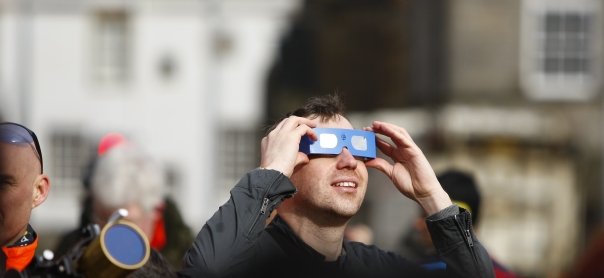
A man viewing the eclipse through eclipse glasses, specially filtered to keep the sun from damaging your eyes. (Photo: Andrew Cowan/Scottish Parliament
In a state of mild shock, I managed to ascertain which scopes were good to go and started directing people to the next available telescope. As others managed to get aligned on the sun (surprisingly difficult, as you can’t directly look at it to point the scope, and the sun is a deceptively small object in the sky), we got into a steady rhythm which would have got through most queues in pretty short order. As it was, the people kept coming as the eclipse progressed, and the queue didn’t seem to diminish significantly!
Eventually, around mid-eclipse, thin clouds started coming in and obscuring the sun. While this meant that the scopes were rendered useless until a gap in the cloud (assuming the sun hadn’t tracked too far across the sky in the meantime), it did mean that the crowd was suddenly able to see, with the naked eye, what was going on. The combined dimming of light from the cloud cover, and sudden hush and gasp from the crowd was a very eerie experience, but an exciting one nonetheless as it was blatantly clear that everyone was feeling exactly the same amazement and excitement at the spectacle.
As mid-eclipse passed and the clouds got worse, the queue for the telescopes dwindled away to a few die-hards who were willing to wait it out to get a telescopic view of the eclipse between the clouds. Everyone relaxed and the views we did manage to snatch were much less hurried.

Catching a glimpse of the eclipse through the Society’s solar telescope, in between clouds. (Photo: Andrew Cowan/Scottish Parliament)
When the eclipse was finally over, we gathered together, all the equipment packed away, and started exchanging stories of the exclamations members of the public had made over the sights they saw in the telescopes, the questions asked, and the number of people whose eyesight was saved by some quick intervention! Seán very kindly took us all into the Parliament cafe where we spent a good hour chatting about all things astronomical, providing a very welcome and sociable end to a busy event.
Throughout my queue management role, I was very grateful to Alan Ellis and Dorothy Mackie who stopped by whilst mingling with the crowds and sharing their eclipse glasses around, so that I could have a peek too – not having mine on me when I left the building was a big mistake! I was also very grateful to Scott Provan for the views of the eclipse he dragged me over to see through his scope, between members of the public, ensuring I got a chance to view the event I was so busy trying to help everyone else see.

My prized possesion from the day – a photo of the sun at mid-eclipse, through cloud. (Photo: Rachel Thomas)
While part of me wishes I could have observed the entire eclipse unhindered, and had ample opportunities to take photos, given the chance to go back and do it again I wouldn’t change my mind. The eclipse was incredible in itself, but being able to share the experience with so many people was unbelievable. It amplified the excitement and meant that there was always someone to exclaim about it with. I also find it so much more exciting and satisfying to observe with all my friends from the ASE, as we all share the same passion for astronomy, and no one looks at you oddly for getting so excited about such geeky topics. Well… most of the time anyway!
Rachel Thomas
This is one of a series of personal accounts recorded by our members of their experience viewing the partial solar eclipse on the 20th of March 2015.
Solar Eclipse 2015 – Members’ Experiences
Here’s one of pics I managed to get, taken at about 9:05am. You can see the sunspot AR2303 quite well.
I realised during the eclipse that one of the best things about owning a telescope is watching other people look through it!
Jon Watson
This is one of a series of personal accounts recorded by our members of their experience viewing the partial solar eclipse on the 20th of March 2015.
Solar Eclipse 2015 – Members’ Experiences

Members of the Astronomical Society of Edinburgh setting up equipment outside the Scottish Parliament, prior to the start of the eclipse. (Photo: Andrew Cowan/Scottish Parliament)
I wasn’t sure how the morning of the eclipse would work out so I came dressed for the outdoors with my solar specs, bought on the internet. It was a great start with blue sky and sunshine, but just a bit cold – although that’s nothing unusual for astronomy! I was amazed at how the number of people grew so quickly that the Parliament staff had to organise a big queue for those who wanted to see through the telescopes that the Astronomical Society of Edinburgh members had brought and set up.
The sunshine gave way to broken light cloud but it still looked ok. Setting up took quite a while and when viewing started there were hundreds of folk waiting. As each telescope became available, a hand would go up and the organisers would send the visitors off to have a look. Many people asked where specs could be bought but, of course, there was not a local supply so I found myself lending mine. People were really good about it, polite and careful and very excited. Some used my specs to take photos as a lasting reminder.
I felt really involved and there was a community feeling about it. The atmosphere was terrific. Folk were gasping and laughing, and when a thin film of cloud covered the sun, suddenly everybody could see it and there was a real “Ohhh” from the crowd. This cycle kept going until the eclipse ended. There was a worrying time when dark cloud came over and those with the telescopes could not track the sun because of the strong filters and had to wait to find it again when the thick cloud passed. However, most of the eclipse was visible one way and another and I was very glad that I was able to take part. Well done to all of us. I think we did a good job.
Dorothy Mackie
This is one of a series of personal accounts recorded by our members of their experience viewing the partial solar eclipse on the 20th of March 2015.
Solar Eclipse 2015 – Members’ Experiences

Geraldine & Pat observing the eclipse through eclipse glasses and a solar filter. (Photo: Andrew Cowan/Scottish Parliament)
This was my 4th solar eclipse – all were different, all were exciting, but this one stood out as the friendliest of them all.
On August 11th 1999 on a residential street in Inverness, by chance, two strangers shared with me their welding masks*, revealing my first partial eclipse. I was hooked! The second was the July 11th 2010 total eclipse viewed from Hao, an atoll in the South Pacific. Atoll idyllic; latrines less so… Total darkness was followed by the diamond ring and Baily’s Beads – awesome! The third eclipse was viewed from Bryce Canyon U.S.A. 20th May 2012 and was where I first made my “Blue Peter” camera solar adaptor for the annular eclipse. Fortunately the eclipse was more impressive than the adaptor, and the adaptor did its
*Please note: only welding glass shade 14 or above is safe for solar viewing – if in doubt, don’t risk it!
Which brings us to Edinburgh – outside the Scottish Parliament, March 20th 2015 for a partial solar eclipse. My two previous eclipses had been spent alongside dedicated eclipse chasers. This one was spent with hundreds of the general public – all keen to view the eclipse, largely without equipment, but it was encouraging to note that some had made very effective pin-hole cameras.

A collection of solar glasses and film used to filter the sun’s light to a safe level. (Photo: Pat Williams)
Eclipse glasses are one of the easiest and cheapest methods of viewing an eclipse. Baader film eclipse glasses show a white sun and mylar (left, centre) ones a warm orange-yellow. My collection of glasses were handed round from person to person, nationality to nationality – it was a truly international gathering – until the cardboard of the glasses was limp but the glasses still effective. The camera adaptor was also very much in demand, and I was fortunate that it was borrowed by Priyanka Lele who produced some lovely images.
Coffee was kindly brought to me by Alison and friend who were just as hooked on the eclipse as I had been when seeing it for the first time. “ Awesome”, “Incredible”, “Can’t believe the eclipse is going on and yet the sun seems the same” – quotes from bystanders, the last without solar glasses. Everything at that moment did seem as normal to the average bystander. As “totality” was reached it grew darker, the birds stopped singing and returned to the trees and those at home with solar panels noticed that their electricity generation dropped to zero.
The increasing cloud cover meant that the final phase could be viewed with the naked eye and was appreciated by many of the new-comers.
Finally the ASE participants gathered for a commemorative photo (see initial eclipse event report) followed by Sean’s welcome treat of coffee and eats in the Scottish Parliament.
A wonderful solar event to witness on the streets of Edinburgh in relative warmth, certainly with a very warm welcome from the general public. My personal thanks to all the members of the ASE present, especially Rachel, Ken and Sean for organising the event, not forgetting Alan Pickup for checking that Arthur’s Seat would not get in the way! My thanks also go to Karl, Dorothy and Sean for subsidising my parking – I will pay you back. Finally, thank you Geraldine for your enthusiasm, and for carrying my gear.
Pat Williams
This is one of a series of personal accounts recorded by our members of their experience viewing the partial solar eclipse on the 20th of March 2015.
Solar Eclipse 2015 – Members’ Experiences
The Sun has got his hat on – A personal perspective on the solar eclipse of 20 March 2015
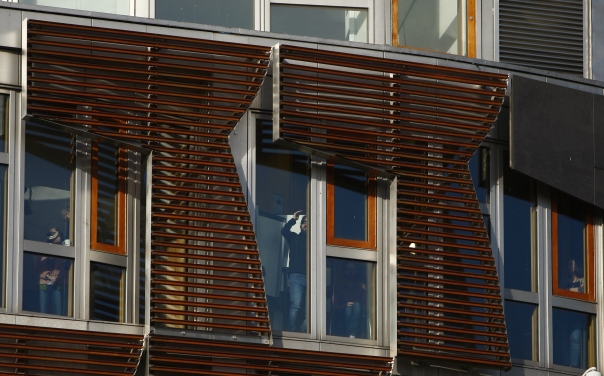
Getting a glimpse of the eclipse from inside the Scottish Parliament. (Photo: Andrew Cowan/Scottish Parliament)
On 20th March 2015 I, and colleagues from the ASE, undertook an event at the Scottish Parliament in Edinburgh to mark the partial solar eclipse that took place over Scotland that morning. We were joined by schoolchildren, Parliament staff and interested members of the public for an observing session. This is a personal perspective of my experience of that event.
Around the time of my sixth birthday in late 1978, my father took me outside one evening to the garden of my family home in Co Kerry, in the southwest of Ireland. He had recently purchased a pair of binoculars and he’d decided to show me the Moon through them.
Despite being an inquisitive child, up until that moment I had never considered the nature of the celestial objects in the sky to any great degree, over and above that of any young child of my generation. My only experience of the world of astronomy had been in childhood songs, nursery rhymes and stories. You know the ones, the cow that vaulted the moon because of some social difficulties with cats, musical instruments and kitchen utensils. The little star that twinkled like a diamond and required me to ponder its nature. Or the nice Sun that helped that determined little arachnid to get to the summit of that awkward waterspout.
However, that limited view of the universe changed that night in my garden. I can still feel today the emotions I felt when I first saw the Moon through my Dad’s binoculars. This was not some fantastical barrier for cows to test their gymnastic prowess against, or a large conglomeration of green dairy produce moving through the heavens! This was a whole other world, totally separate from the one I lived on. It had mountains, and valleys and plateaus, just like the Earth. But, it was not the Earth, it was out there, separate, distant. I was fascinated, captivated, exhilarated. Even as a small child I realised for the first time that my home was not some all-enveloping reality that ended at my front door. Rather, I was perched on a spherical rock in space, orbited by a smaller spherical rock.
That first encounter with the universe is where this story may have ended for me. And I might have, like so many other children who grow up, never giving more than a passing thought to the universe above my head. However, the deal was sealed for me just six short months later.
At some point in early 1979 we bought our first colour TV set. I was too young to remember why – maybe my father was fed up of watching sports programmes in black and white. Watching Terry Griffiths play Ireland’s own Dennis Taylor is a lot easier to understand when you can tell the pink ball from the green ball on the snooker table.
Or maybe it’s because later that year, Pope John Paul II was due to visit Ireland. And much like Coronation of The Queen for British people in 1953, for predominately catholic Ireland in 1979, everyone just had to have a new television to see that lovely Polish man in the white outfit.
Whatever the reason, neither of these great historic events were the highlight of 1979 for me. My moment of 1979 came sometime in the spring when the first time lapse images from a little spacecraft called Voyager I appeared on our new colour TV set. The sight of the storm bands circling round Jupiter, and the churning great Red Spot, captivated me. Suddenly, here was another world separate from either the Earth or the Moon. Just how BIG was this space???
And then the crowning moment came when a small black shadow darted across the massive face of Jupiter. At first, most lay people probably thought this was just a defect in the image, or a piece of cosmic dirt on the tiny camera lens, tens of millions of miles away in the darkness.
But of course it was neither of these things. It was the shadow of yet another moon. Not our Moon, the NASA voiceover told us, but that of one of Jupiter’s moons. WAIT, WHAT?! – Jupiter has its own moons! And in that moment I realised what it was I had been trying to tand since the observing session with my Dad some months earlier. There was a whole complex universe out there, with lots of objects orbiting lots of other objects. I was sold, transfixed, shot through with emotional electricity. A six year old glued to the universe. And best of all, it didn’t make me feel small, or afraid, or insignificant, or dizzy from the vertiginous vastness of its all. It made me feel big, and giddy and alive and part of a huge universe of motion. Shut up astronomy, you had me at hello – or should that be you had me at Ganymede?
I became one of those kids who didn’t just have pictures of moons, planets and stars on the walls of his bedroom. No, I was the one who had them pinned all over the ceiling too, so I could lie on my bed and look at the night sky whenever I wanted. The fluorescent star chart was my favourite because it was great in the dark. My own personal indoor universe.
This for me is the true magic of astronomy. As I have grown up I have learned about the mindboggling size of the universe, and of gravity and electromagnetism and dark matter. I’ve learned that the biography of the universe is written in the language of mathematics, and chemistry and quantum physics, a good deal of Latin, Greek and Arabic. And even though I’m just an amateur, I love ALL of it. But, most of all I love the fact that every time I look through a telescope, or binoculars or just stare at the night sky, I feel that giddy wonder of my six year old self again – every single time!
So on 20th March 2015 I got to share a solar eclipse with 40 giddy six and seven year olds from the Royal Mile Primary School. And though I spent most of the eclipse indoors, watching it on a big screen with the kids, it didn’t matter so much. Because at one point in the morning I looked out the window of Committee Room 3 of the Scottish Parliament with a small solar viewer I’d hidden away in my pocket, and I got to see my old friend the Moon take a great big bite out of the Sun, who had his hat on for the morning. And I was giddy, elated, I was six again.
And the excited, breathless questions those children asked me as we watched the eclipse together, live from the BBC, in Committee Room 3 made me hope that – if for just one of those kids, this eclipse was their moons of Jupiter moment, like I’d experienced at their age – then all of the work and effort to set up the event would have been totally worth it.How long does it take light to get from the Sun to the Earth the kids asked? How far away are the planets? Why does the Moon go round the Earth? How bright are the stars? Are there aliens out there? When you’re six years old you’re fearless.
20th March 2015 is the first time I’ve seen a solar eclipse in the flesh. It won’t be the last time. And next time I won’t be indoors. But while this Journal is, no doubt, replete with the scientific language of astronomy, I am struck by how insufficient Latin and mathematics are to convey the emotional effect such an event had on me. Ironically, it is in verse and rhyme I find, that the feeling of sheer wonder and awe that such a natural event as a solar eclipse can have on people, is most accurately expressed.
Just like Hey Diddle Diddle, or Twinkle Twinkle Little Star I am back where I started, and maybe that experience holds part of the true nature of what the universe is, and what it means to be part of it?
And as for my musings on the nature of the Moon, well these days my preferred nursery rhyme on that topic goes something like this—
Art thou pale for weariness
Of climbing heaven and gazing on the earth,
Wandering companionless
Among the stars that have a different birth, –
And ever changing, like a joyless eye
That finds no object worth its constancy?– To the Moon, by Percy Shelley
Seán Wixted
This is one of a series of personal accounts recorded by our members of their experience viewing the partial solar eclipse on the 20th of March
Solar Eclipse 2015 – Members’ Experiences
The various stages of the eclipse – deepest eclipse top, right and last contact bottom, right. (Photo: Horst Meyerdierks)
The solar eclipse of 2015-03-20 was total in the North Atlantic, with the path of totality crossing the Faroe Islands and Svalbard. In Edinburgh, the eclipse was partial with 94% of the solar diameter covered by the Moon at deepest eclipse. The weather forecast was not good, but slightly better for Angus and Northumberland. The afternoon before, I decided to drive to Angus, but at 04:15 on the morning of the eclipse I checked the forecast and changed plan. At 05:10 I headed to Northumberland, where the eclipse would be 92%. Stopping between Wooler and Morpeth, the weather seemed better further inland and I first settled for a spot between Thropton and Harbottle at 07:30.
However I decided to explore further up the road, and by the time I came back at 08:00 it was too cloudy. I decided to try further south, but by the time I reached the main road I changed my mind again and went for the blue sky to the Northeast. At 08:36 – five minutes after first contact, I finally settled for a field track outside Bolton near Alnwick. Before setting up, I tried to take a few free-hand shots at 200 mm focal length. But I lost them in a memory card reformat and had to take one more on the refreshed card. Also, I messed up and left the lens at 55 mm focal length instead of turning it to 200 mm. By the time I had set up the telescope and took the first proper image, it was 08:55, the phase already 39%.
There was varying cloud in front of the Sun; mostly I used a foil filter, but at times I used the cloud as only filter. I am still a bit annoyed, because the sky in general was reasonably clear. A spot a few km away might have had better weather, and at home -as it turned out – people saw the eclipse as well. But the weather forecast was particularly tricky and ultimately meaningless that day, and I tried to be sure of the best chance of seeing the eclipse.
The images at the top of the article were taken with a VEB Carl Zeiss Jena Telementor II refractor (63 mm aperture, 840 mm focal length, f/13.3), Baader foil filter, and Canon EOS 600D camera (pictured above). The second and fourth image show the deepest eclipse and the last contact. I am grateful to have this telescope, which I got through the Astronomical Society of Edinburgh from a member of many years who is no longer able to make use of the scope. It is a perfect replacement for my previous solar imaging setup. The optical quality is outstanding – as good as optical theory will permit – and the mount is very sturdy for its size, weight and load. Being entirely manual, the mount is ideal for this sort of project.
The media constantly compared this eclipse with 1999 as the last major eclipse. In fact, the 2003 eclipse was deeper at 98%, the 1999 eclipse was only 86% in Edinburgh. UK-wide, 1999 and 2003 would have been about the same depth, one being total in Cornwall and the other annular in Caithness.
Horst Meyerdierks
This is one of a series of personal accounts recorded by our members of their experience viewing the partial solar eclipse on the 20th of March 2015.
Solar Eclipse 2015 – Members’ Experiences

ASE members and members of the public observing the solar eclipse outside the Scottish Parliament. (Photo: Andrew Cowan/Scottish Parliament)
For me, the trauma of getting to the Scottish Parliament at 7:30 am on a cold Friday morning was offset by the clear sky and bright sunshine. Armed with my solar specs bought on-line, I hoped for a glance of a crescent sun in someone else’s telescope, and maybe some sight of totality from the Faroe Islands streamed on screens inside for the school parties. What I found was a group of colleagues from the ASE with kit of various kinds – solar-scopes to white card to colanders – and a growing crowd of public visitors, come perhaps to visit the Parliament, Holyrood Palace or Arthur’s Seat. All of them became attracted by the sight of the telescopes and stayed for the opportunity to see the eclipse. Many asked where solar specs could be obtained and were disappointed by absence of sales on site, but various members lent their solar specs to those queueing for the telescopes so they didn’t miss out.
As the formalities indoors drew near, I volunteered to be caretaker for Sean’s sun-screened ‘scope while he did his day job with visitors in the Parliament. Finding the sun was an issue. Yes, nothing in the eyepiece and no luck finding the smallest shadow on the ground; and only the direct sun in the lens would get through the safety film that Sean had attached to the front. Queues were lining up for a sight so I picked up the whole thing and did a little dance until I saw the magic flash of light in the eyepiece.

Andrew trying to find the sun with a heavily filtered telescope! (Photo: Andrew Cowan/Scottish Parliament)
What followed was great fun. Visitors were directed to the telescopes as they became free, all being as quick as possible but not concealing their pleasure at the sight of the diminishing crescent. Between guests, I adjusted the tracking of the rapidly-moving image so as not to lose it again! Of course, in the process I saw the image dozens and dozens of times. I learned also to lean firmly on the tripod as its legs were all too easily kicked as folk moved around them. I think that the gasps and exclamations were genuine: it was a fantastic sight to see a magnified shot of something normally so bright that you cannot look at it. I failed to get a photograph successfully thought the telescope lens but after one girl succeeded with her phone, I encouraged others to try. Imagine the texts ‘…the eclipse as I saw it in Edinburgh…’
Then cloud threatened to spoil the minutes nearest totality and it got colder, though not really darker, an interesting proof that even part sun is still incredibly bright, but that we need the whole sun shining to heat us! A real bonus followed with thin cloud just screening the heat and light but giving a clear shape of the crescent sun, one that everyone could see. There was an audible gasp as hundreds of folk saw the shape getting smaller then slowly expanding again. This was astronomy in action.
The queues continued until the eclipse was past, and I think that sharing with hundreds of visitors made it all a success, more so than just seeing the eclipse myself.
Oh, and thanks Sean for lending your kit whilst working indoors and missing most of the outdoor excitement…
Andrew Mackie
This is one of a series of personal accounts recorded by our members of their experience viewing the partial solar eclipse on the 20th of March 2015.
Solar Eclipse 2015 – Members’ Experiences
This has probably been the best solar eclipse that I have observed to date. In August 1999 I made the journey down to Cornwall in anticipation of observing the first total eclipse on mainland Britain since 1927, but I was disappointed in having totality obscured by cloud from where I was observing (in the village of Lamorna near Land’s End). Then in 2006 I was on hand to observe a partial solar eclipse at the City Observatory with several other ASE members, including Ken and Graham. We had good weather for this event, but only about 20% of the sun was covered at maximum eclipse. With this eclipse on the 20th March predicting 94% coverage in Edinburgh, it seemed like a great opportunity to see an eclipse in detail.
Having said that, the weather forecasts had been predicting thick cloud and I was wondering if we would see anything at all! Good omens appeared during the week, though, when we were getting clear skies in the mornings. You have probably noticed this yourself, how often it is clear first thing in Edinburgh but then clouds up later in the day. One of the first things I checked out was whether I would be able to watch the eclipse from the back room of our flat and I was pleased to see that by 8.30am the sun had already cleared the rooftops opposite. It also gave me the opportunity to practise projecting the sun onto paper using a small telescope (see above). You don’t need much to get a decent image and this small scope rigged from the objective of a pair of binoculars sufficed. In fact I got a pretty decent image of the sun on the day before the eclipse (left) in which you can see sunspots on the limbs at the left and far right. I used the macro setting on a small digital camera to photograph the paper.
You can imagine my surprise on the morning of the eclipse when it dawned fair and bright! I got equipment set up and took an image of the sun prior to the eclipse starting. Then it was all go as the moon took the first bite out of the sun at about 8.30am (left). You can see how far the sunspot at the right has moved since the previous day.

Image showing the progress of the eclipse, taken at 10 minute intervals throughout – all photos can be enlarged by clicking on them. (Photo: Duncan Hale-Sutton)
I did manage to get a whole sequence of pictures every 10 minutes or so up until the time of maximum eclipse about an hour later (see above). By then we were experiencing intermittent cloud which enabled me to face out of the window to see that happy smile over the rooftops (see below). After that I was more relaxed and taking pictures less frequently. By the end of last contact it was touch and go whether I would see it as cloud was becoming much thicker, but I did, just.
I would say that, even though I thought I was prepared, I still found I was rushing around like a headless chicken and finding out that I had failed to charge the batteries on some of my other cameras. I had hoped to experience how the light levels change outside but I had my back to the window for most of the time. I also made the classic mistake of not realising that the image I was photographing was a mirror image of how you usually see the sun in pictures (because I was photographing the front of the paper and not the back, so to speak). This meant that, although I had put some pictures up early on the ASE Flickr pages, I had to pull them later and resubmit them so that I could get the sun the right way round.
All in all it was a great experience, but maybe next time I will just go outside and enjoy the whole thing without worrying about recording any of it!
Duncan Hale-Sutton
This is one of a series of personal accounts recorded by our members of their experience viewing the partial solar eclipse on the 20th of March 2015.
Solar Eclipse 2015 – Members’ Experiences

Members of the Society aid members of the public in viewing the eclipse outside the Scottish Parliament. (Photo: Alan Ellis)
I was helping Peter Mulholland, guiding members of the public to his telescope and, from time to time in between viewers, had a look myself at the progress of the moon over the sun. It was very enjoyable helping the public to view the eclipse and saw it myself at various stages. This is the second eclipse I have seen and it was better than the first time – it was fantastic. The atmosphere with so many people there was brilliant. A thoroughly enjoyable morning.
Anne Bulman
This is one of a series of personal accounts recorded by our members of their experience viewing the partial solar eclipse on the 20th of March 2015.
Solar Eclipse, 20th March 2015 at the Scottish Parliament

Large crowds gathered outside the Parliament to view the eclipse in largely sunny skies, with some help from ASE members. Photo credit: Rachel Thomas
We had a fantastic time at the Scottish Parliament this morning! A solar eclipse doesn’t come along all that often and it was great to share this one with members of the Society, local school children, members of staff and several hundred members of the public. My weather forecast from yesterday predicted 90% cloud cover, so I was delighted, when we set off at 7.00 am, that I had to put down the sun-visor in the car!

Various telescopes with the appropriate filters were set up to enable members of the public to safely share this fantastic experience with us. Photo credit: Rachel Thomas
I gave a talk to school-children from James Gillespie’s High School and members of staff, while Seán talked to Holyrood Primary School children. The Parliament staff were brilliant! Everything was laid on for us and they had large plasma screens set up inside streaming live images from the Faroes and the BBC’s airborne ‘observatory’, so the children missed nothing.

The public were very enthusiastic and most had solar viewers or pin hole projection systems to allow them to watch the progress of the moon throughout the eclipse. Photo credit: Alan Ellis
Meanwhile outside, our band of around 14 volunteers manned the Society’s solar telescope, 6 ‘white-light’ telescopes, binoculars and a solar projection set up. As the crowds gathered, there was great excitement as the shadow bit into the Sun. Other members of the Society arrived during the morning to lend their support and enjoy the spectacle. Some cloud blew in as the maximum approached, but it didn’t dampen spirits at all.

A very happy band of ASE members post-eclipse, glad to have shared such a special experience with so many people. Photo credit: Rachel Thomas
The Parliament put together a video record of the morning – https://www.youtube.com/watch?v=f8rNj9S2G_4 – which very nicely summed up the general feeling of excitement and enjoyment of what was a truly memorable day.
Ken Thomas



